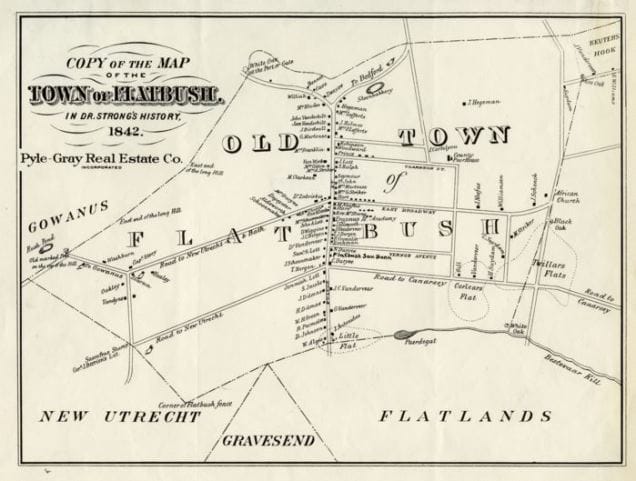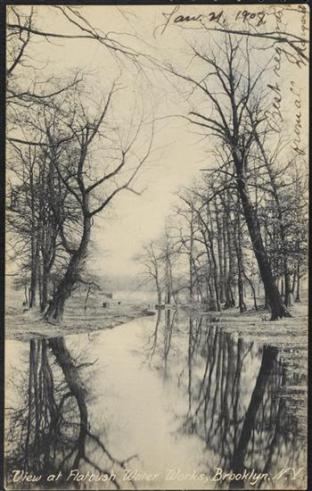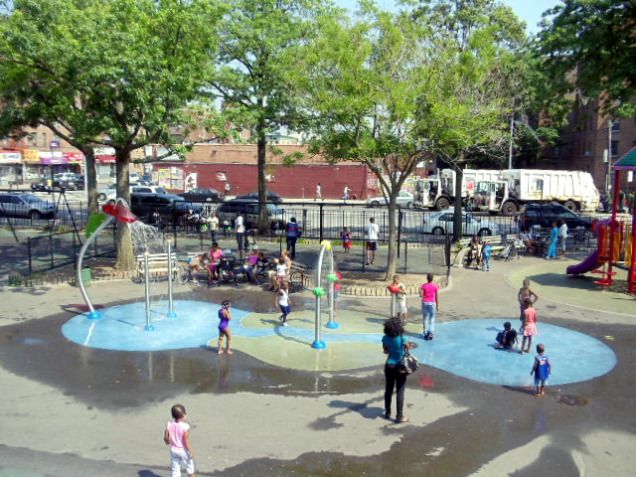The Amazing Story Of Flatbush’s Drinking Water


Did you know that Flatbush once had its own local source of drinking water?
In the pages of his upcoming book, Hidden Waters of New York City: A History and Guide to 101 Forgotten Lakes, Ponds, Creeks, and Streams in the Five Boroughs, reporter and Parks Department analyst Sergey Kadinsky describes how the community of Flatbush relied on Paerdegat Pond, located at what is now Foster Avenue, between Nostrand and Brooklyn Avenues, as its source of drinking water until 1947.
Flatbush, one of the six original Dutch settlements that would become Brooklyn, was independent until its consolidation into Kings County in 1894 and was responsible for obtaining its own water, writes Kadinsky.
But decades after consolidation with Kings County and then the City of New York in 1898, Flatbush residents continued to use water from Paerdegat Pond, which was situated on the outskirts of the original village and surrounded by an old forest.
Kadinsky writes in his accompanying blog, Hidden Waters:
Paerdegat is the Dutch name for “horse gate,” a stream that originated to the south of the Flatbush settlement and flowed in a southeast direction towards Jamaica Bay. Today, the only surface remnant of this stream is Paerdegat Basin, an inlet of Jamaica Bay that reaches a mile inland with its head at Flatlands Avenue.
The water from Paerdegat was delivered by the Flatbush Water Company, which constructed wells around the pond in 1881 and eventually had a contractual relationship with the City of New York as the community’s sole supplier of water.


Unfortunately, the water that came from Paerdegat was poor in quality, Kadinsky describes, “too salty, hard, corrosive and with a high lime content.”
As Brooklyn rapidly urbanized around Flatbush in the early 20th century, Paerdegat Pond and its nearby forest remained intact. It was the only original forest in Brooklyn, besides Prospect Park, writes Kadinsky.
By 1941, however, Flatbush residents and local elected officials had had enough and filed a lawsuit against the Flatbush Water Company. The community was released from its 99-year contract with the company in 1947 and was able to connect with the city’s water supply system, which uses the Catskill Mountains as its source.
Two years later, in 1949, Paerdegat Pond was buried and the forest was cleared. An important chapter in Flatbush’s history as an independent town had finally closed.
Vanderveer Estates, a complex of 59 apartment buildings, was constructed on the 30-acre former site of the pond and forest. Tragically, Vanderveer was plagued by crime and violence for much of its history, Kadinsky writes.
Vanderveer Estates was re-opened in 2006 as Flatbush Gardens.

Paerdegat Pond, its waterworks and forest have not been completely erased from Flatbush, Kadinsky notes.
Nostrand Playground, at the intersection of Foster and Nostrand Avenues, sits on a sliver of what was the old forest. And Paerdegat Park, a mile to the east of the playground, is the site of one of the pumping stations which drew water from the original pond and creek.




